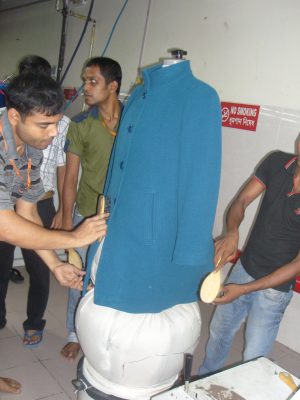The Regional Comprehensive Economic Partnership (RCEP), which represents almost 30 percent of the world’s population and GDP, is a triumph of multilateralism and ASEAN’s middle-power diplomacy.
And although the Wall Street Journal has dubbed it a “Paper Tiger,” it could script the future of Asia, bringing three of the continent’s four largest economies – China, Japan, and South Korea – under the same umbrella for the first time.
With the RCEP aiming to pull the global economic center of gravity towards Asia, Bangladesh expressed interest in joining the mega partnership. But with India pulling out, critics are now questioning whether Dhaka acted prudently by showing interest in the grouping.
Currently, Bangladesh is associated with just a few multilateral economic alliances like the D8, APTA, and SAFTA. Since 1976, the country has been experiencing sustained trade deficits because of low export volume. After graduating from the list of least-developed countries, Bangladesh’s export to the RCEP region will face tariff and non-tariff barriers, which will worsen the existing trade deficits.
The ASEAN-centered initiative is intended to boost intra-RCEP export by eliminating trade barriers, cutting costs, and minimizing lead time, which is a better trading model than wading through the numerous complicated FTAs across Asia.
The FTAs in Asia complicate cross-border trade by increasing transaction costs, igniting trade protectionism, and minimizing overall operational efficiency. RCEP will make it possible for Bangladesh to avoid the complexities of Asian FTA networks and provide a sustainable remedy to the “noodle-bowl effect” that entraps aspiring new traders in a web of preferential treatment.
Moreover, Bangladesh’s decades-long dream to regularly engage with ASEAN will be realized by joining a platform like RCEP, which promises larger business opportunities than ASEAN.
In comparison, the “RCEP-first treatment” among member-states is destined to create a wealth of opportunities for Bangladeshi businessmen, who vie to secure access to stable markets. Larger than the European Union, RCEP’s comparatively resilient supply chain has the potential to ensure reduced production costs for Bangladeshi entrepreneurs, resulting in quality products with affordable prices for consumers.
Particularly, the Bangladeshi e-Commerce industry – which is slated to reach around $3 billion valuations by 2024 – will get duty-free access to the world’s biggest e-commerce marketplace in Southeast Asia. However, the most important benefit that an RCEP membership brings is that it will prepare Bangladesh’s transformation into a manufacturing hub by unlocking unexamined opportunities, exploring new avenues of economic cooperation, and providing developed RCEP members a feasible option for relocating their “sunset industries”.
At the heart of Bangladesh’s interest to join the RCEP – and perhaps looking beyond mere cost-benefit comparisons – lies the discussion regarding compatibility with the country’s economic comparative advantage. Just by being in the partnership first, regional competitors like Vietnam already have the upper hand. With each passing day, the difference between Dhaka and Hanoi’s export earnings can only increase.
To compound the worries, Dhaka also finds itself at the edge of duty-free access to some of the RCEP countries, like Australia, as it waits for inevitable expiry of such agreements as the country matures into a developing nation. At the very least, RCEP provides Bangladesh with the opportunity to continue duty-free, or low-tariff access to much larger markets.
In extension, an RCEP membership also allows investment assistance, trade facilitation, and logistics support that can provide Bangladesh with positive momentum to attract FDI, develop value chains, and set the country up for knowledge spillover as interactions between global market experts and local industry leaders will be destined to grow.
The biggest challenge of an RCEP membership, however, is granting other members access to Bangladesh’s domestic market, potentially risking a worsening trade deficit.
The intense competition resulting from the entry of overseas suppliers will put pressure on domestic companies to improve the quality of local products. Currently, Bangladesh receives duty-free access without the need to reciprocate in kind domestically. But an RCEP membership changes that reality, forcing companies to adapt and improve at a much faster rate.
A likely remedy that is available to the Bangladeshi government is to address these multidimensional challenges in a much more robust manner than in the past. This is not to say that Dhaka should do its homework and design an economic plan with short, mid, and long-term goals, but rigorous impact assessments become the need of the hour where market access and diversity of product baskets become an integral part of negotiations before joining the partnership. In a nutshell, economic planners have to ensure that tariff losses do not outstrip the benefits of being an RCEP member.
Bangladesh has two options: join the RCEP that bundles multiple FTAs under one unified system, or sign an FTA separately with each RCEP member to avoid losing market share to competitors. Signing multiple FTAs individually involves a prolonged negotiation process, greater complexities with a higher possibility of failure.
Joining RCEP will boost the Bangladesh economy especially in the context of the pandemic-induced slowdown. It will connect Bangladesh to regional and global markets, and send out a positive signal to foreign investors.
In evaluating Bangladesh’s decision to board the RCEP train, it is imperative to ask how Bangladesh can receive the access to the RCEP markets, and assess if the terms and conditions involved provide a net advantage to the economy. It is only then that the challenges and benefits of this puzzle will all fall into place to provide a clear picture.

































